1964-65 President's Report
Report Of The President -- 1964-65

Virginia Polytechnic Institute
The Board Of Visitors
Harry C. Wyatt - Rector
Erwin H. Will - Vice Rector
William E. Blewett
George M. Cochran
Mrs. Mavis M. Gibbs
John W. Hancock
William J. Irwin
Dr. Adger S. Johnson
E. H. Lane
William T. Rice
Mrs. English Showalter
Mrs. Jane G. Wilhelm
Wyatt A. Williams
Charles W. Wampler. Jr., Ex Officio
Dr. Woodrow W. Wilkerson, Ex Officio
Vol. 58, No.7, July, 1965
Bulletin Of The Virginia Polytechnic Institute. Published monthly by the Virginia Polytechnic Institute. Second-class postage paid at the post office at Blacksburg, Va,
Virginia Polytechnic Institute
Report Of The President

Introduction
There are significant and important accomplishments to be recorded each year in the annals of any rapidly developing institution of higher learning; the events, decisions and programs of each passing year necessarily must evolve from earlier planning and preparation.
Each year in turn is thus the most significant and important in Virginia Polytechnic Institute's rich history; in each new year the accomplishments of prior years must be forged into the cutting edge of the day by day operations of the university. And as continued strengthening of the university's educational efforts is achieved, planning for future achievements must be carried forward in the depth and scope required for Virginia Polytechnic Institute successfully to fulfill its basic mission as a major land-grant university.
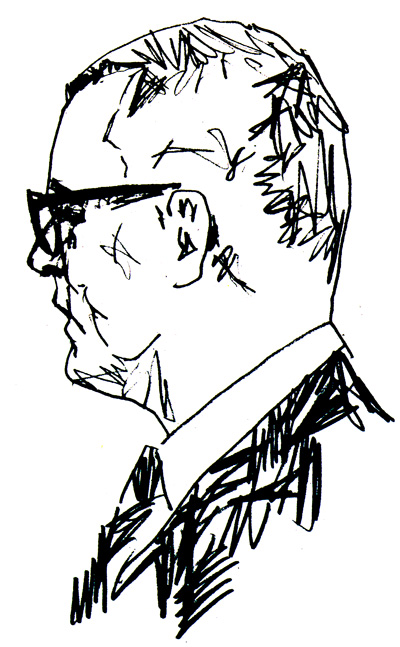
The year now ended will take its place in historical perspective with each of the other passing years. Much has been accomplished, and much remains to be done. This annual report necessarily must be a progress report on a task of formidable dimensions.
How large a task it is has become increasingly clear. Reviewing the university's mission in higher education in the fall of 1964, the V.P.I. Board of Visitors concluded that it is "to provide the best possible resident instruction for the qualified youth of Virginia," together with "strong research and extension programs to serve the needs of the Commonwealth."
If the academic year now closed is of unusual significance in the annals of Virginia Polytechnic Institute, it is because of a clearer understanding of the scope and importance of this mission. As Virginia's land-grant university, V.P.I. has a basic obligation to provide appropriate educational opportunity to the qualified Virginia students who seek admission.
The university's obligation to continue the research and investigation necessary to understand better the world in which we live, and the social organization which has evolved, is universally acknowledged. If a university is to teach, it can never falter in the unending quest for new knowledge. Through programs in cooperative extension the benefits of the expanding frontiers of knowledge must be made available to all Virginians.
Yet in an era in which the numbers of qualified young people seeking higher education are growing so rapidly, and in which the world's total body of knowledge appears to be endlessly expanding, the fulfillment of this mission becomes an increasingly larger task.
Virginia Polytechnic Institute obviously is not alone in its efforts to provide more significant educational opportunity for the larger numbers of young people who seek it. Institutions of higher learning throughout America have vastly expanded their teaching and research programs in the years since World War II. With the social and economic trends now apparent in the nation, together with a rapid population growth, the institutions of higher learning must necessarily continue a pattern of substantial growth.
Virginia and Virginia's institutions of higher learning only recently have reached a point where they must compete on a national basis. Only since World War II has the Commonwealth entered the main stream of the national economy, as the industrialization and urbanization of the state became significant. The broadening of Virginia's economic base to gain a larger share in a rising national economy already is showing important results for Virginia citizens.
Similarly in higher education, the emerging national distinction of Virginia institutions holds promise of yields far in excess of the necessary investment. Substantial investment obviously will be necessary, for Virginia has lagged well behind the nation in the development of its colleges and universities; it becomes all the more essential to intensify our efforts.
This is the context in which Virginia Polytechnic Institute's efforts to meet its responsibilities must be viewed. As the social and economic progress of the Commonwealth continues, and as Virginia's educational system seeks to prepare larger numbers of young people for more meaningful and productive roles in an increasingly complex society, the number of qualified students seeking higher education will continue to grow very rapidly.
Virginia's rapid population growth also is swelling the stream of young people seeking higher education, well qualified students capable of making important contributions to their state and nation. If Virginia is to benefit from their achievements, they must be given all possible encouragement to remain in the state for their education and subsequent careers.
This is a basic part of the mission of Virginia Polytechnic Institute. In the pages that follow are reported the university's efforts during the year to meet some of the most urgent of its responsibilities: the development of curricula better designed to meet the broadening needs of higher education for Virginia's young people and the provision of the physical facilities required for the enrollment of more significant numbers of qualified Virginia students.
The year now ended saw gratifying progress in both directions; only the magnitude of the task cast the significance of V.P.I.'s efforts during the year in less vivid contrast. Perhaps the most important single step was the improvement of faculty salaries, resulting from the 1964 General Assembly's action relating those salaries to the national average for land-grant universities.
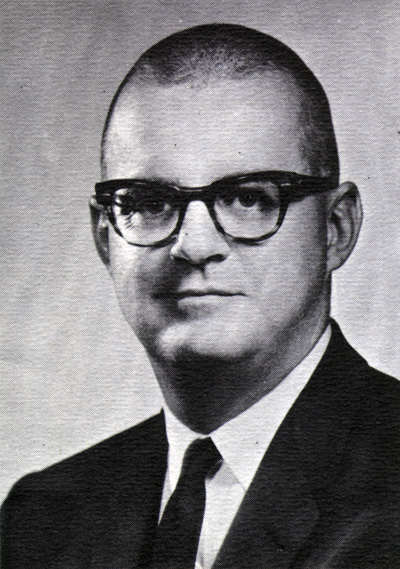
A more reasonable faculty salary scale has been extremely helpful in permitting the university to compete on a national basis for outstanding faculty, both to retain outstanding teachers and researchers and to add additional faculty strength.
There has been substantial progress, too, in strengthening the university's academic base; almost without exception the departments and colleges have been restructuring and improving their courses and major programs.
The university has been compelled to plan a substantial development program to permit the admission of larger numbers of qualified students. Three dormitories are now under construction; a fourth will be within the next few weeks. For the next six years the V.P.I. Board of Visitors has approved a development plan contemplating the investment of some 50 million dollars in buildings and equipment.
There are many signficant[sic] accomplishments which should be noted for the year now ended; they will be reviewed in some detail in appropriate sections of this report. It has been a year of progress, but a year which sharply outlines the challenges ahead.
T. Marshall Hahn Jr.
President
1964-65 -- A Perspective

July 1, 1965
In the fall of 1964 6,510 students enrolled at Virginia Polytechnic Institute. Three hundred and twenty of them were women. The freshmen class, excluding a small number of special and non-classified students, totaled about 1,400. Nearly 3,800 applicants sought admission.
Approximately 1,800 freshmen will be admitted in the fall of 1965, with a total enrollment of approximately 7,000. When admissions were closed for the coming academic year, approximately 5,500 applications had been received. Requests for another 1,000 application forms were refused because it was apparent that it would not be possible to consider additional applicants.
The competition for admission thus is requiring a steadily increasing selectivity of students. When large numbers of well qualified high school graduates must be rejected, those who are admitted tend to rank near the top in pre-college achievement.
It is, of course, necessary to raise the academic level of the university to match the technological and social changes which are occurring so rapidly. There is danger, however, that the exclusion of increasingly large numbers of qualified students will work both to the detriment of the university and to Virginia.
The university has by no means reached a point where the academic demands of its degree programs are unreasonably high; there are areas where continued improvement is necessary. Undoubtedly, however, V.P.I. has closed its doors to many hundreds of students who are qualified for university work, and who could enormously benefit themselves and the Commonwealth by college preparation for productive careers.
This trend, if permitted to continue, ultimately would negate the university's basic mission as a land-grant university. It is becoming of critical importance that the university develop the facilities to accommodate a more reasonable proportion of the young people seeking admission.
The development plans aimed at the necessary growth of V.P.I. to accommodate significantly larger numbers of students are discussed elsewhere in this report. The point is noted here because it is very much a part of the context in which the university has been functioning in the year now ended. Two additional dormitories were opened at the outset of the year, housing approximately 520 men students. As the school year closed construction had begun on three dormitories to house 1,414 students; site preparation was in progress for a fourth dormitory for another 1,000 students.
In the midst of the university's rapid physical growth there also are apparent an excitement and intellectual ferment which permeate the entire university community. It is seen in the daily activities of the students and faculty alike; in classroom and laboratory, in the dorms and dining halls, in library and faculty offices. It is the contagious excitement of a growing institution very much alive.
Part of it stems from the strengthening and regrouping of the university's teaching and research resources. Impressive progress has been made in all of the colleges in the improvement and revision of the courses and majors programs, in strengthening their faculty, and extending the depth and scope of their instruction and research.
These improvements are aimed at developing appropriate curricula designed to meet the needs of an increasingly complex society. The Graduate School, now growing rapidly, has led the way toward a general strengthening of all programs. Its more rigorous entrance requirements and closer examination of academic progress have enabled the strengthened faculty to make significant improvements in the caliber of offerings.
The faculty salary increases approved last year, averaging about 10 per cent, permitted retention and recruitment of many outstanding university teachers, whose dedication and ability are being demonstrated with increasing effectiveness in the classrooms and laboratories. Salary increases averaging about six per cent have been approved by the Board of Visitors for the year now beginning, to maintain V.P.I.'s relative position in national averages for land-grant universities. The increasing competence of the faculty is underscored by the degree level, the institutions granting the degrees, their, outstanding teaching experience, and the published evidence of their scholarly activity.
Much, of course, remains to be done. There is a critical need for substantial additional support for salary increases for V.P.I.'s staff and hourly employes. Similarly the existing salary scales of farm and home extension agents in the local communities are resulting in a rapid loss of valuable personnel; the difficulty of obtaining qualified replacements is rapidly intensifying. A shortage of operating funds in the Agricultural Experiment Station and in many other areas of the university also has created severe problems.
Many programs and activities are yet to be redesigned to meet better the needs of today's students. But the basic theme of the story of V.P.I. in 1964-65 is the revitalized commitment to the tasks which remain. It is part of the ferment of growth and improvement in which the university is immersed.
The evolving pattern of the university's development appears in the enrollments of its component colleges. Approximately 45 per cent of the students this past year were in the College of Engineering. Ranked by enrollments, the other colleges are Arts and Sciences (20 per cent), Business (18 per cent), Agriculture (10 per cent), Architecture (5 per cent) and Home Economics (2 per cent). Approximately 700 students were enrolled in the Graduate School, or about 12 per cent.
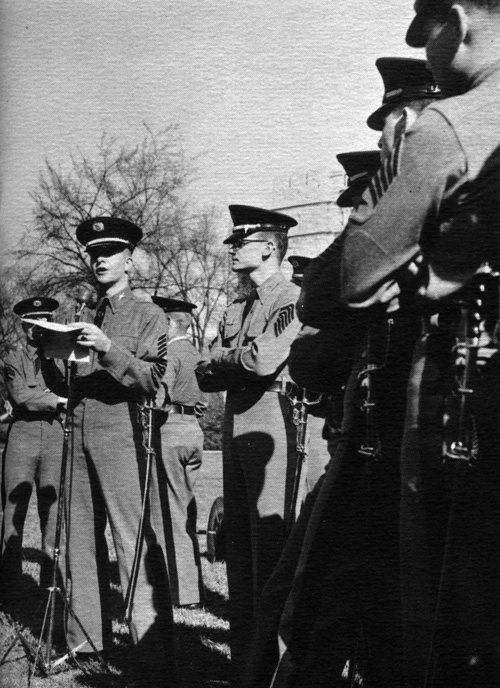
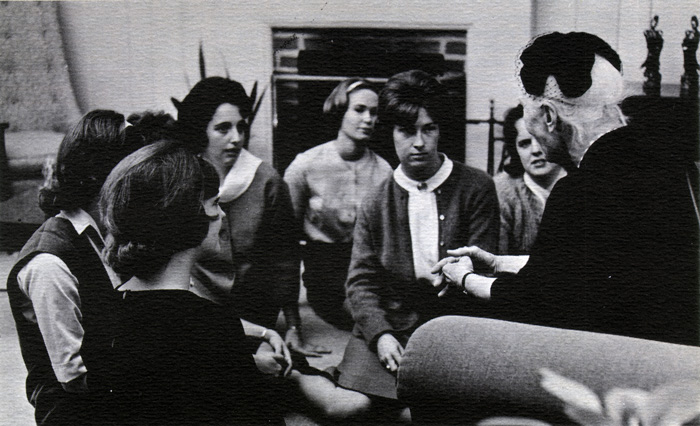
The undergraduate work in the six colleges is supplemented by 53 masters' programs and 25 programs in 21 departments at the Ph. D. level. All of the colleges are sustaining substantial growth, although Architecture, Arts and Sciences, Business and the Graduate School are expanding most rapidly. The increased emphasis on a better balanced academic program for the university is reflected in these trends.
This same emphasis was apparent in the transition to an optional military program. The past year was the first full academic year since the establishment of the military option for incoming students, rather than automatic admission to the Corps for eligible male students. Although Corps membership declined somewhat — cadet enrollment last fall totaled approximately 1,600 — the academic achievement and the drop-out rate for both civilian and cadet freshmen improved significantly during the year.
The proportion of out-of-state students has been retained at approximately 20 per cent. This is about the minimum proportion possible if the university is to retain the educational benefits of a diverse student enrollment. This past year students were enrolled from 42 states and the District of Columbia; more than a score of foreign countries also were represented in the student body, as well as students from virtually every community in Virginia.
Significantly, too, the Board of Visitors this past year opened all courses at V.P.I. to women students, eliminating principally the remaining restrictions on liberal arts courses for women. Previously Radford College had been the co-ordinate women's college of V.P.I., but the 1964 General Assembly severed this connection.
Consequently plans were developed during the year to provide more adequate housing for larger numbers of women students, permitting the enrollment of substantial numbers of co-eds who seek to enroll in the programs offered by the university. This will be accomplished initially by renovating one of the existing men's dormitories for the use of women students.
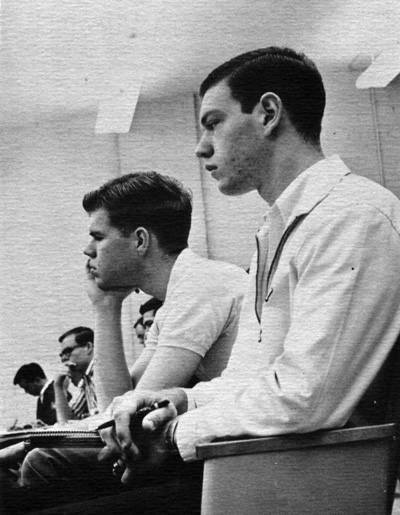
Among the university's efforts to develop more fully the educational opportunities of its students was the Visiting Scholars Program, initially made possible in 1964 by an anonymous donor.
Scores of outstanding teachers were brought to the campus as departmental visiting scholars to share their experiences in a variety of fields. In addition the University scholars who visited the campus included Dr. Charles Malik, political philosopher; Dr. Lillian Gilbreth, engineering and business management consultant; Prof. Fred Hoyle, British astronomer; Dr. Edward Teller, the nuclear physicist; Sen. J. W. Fulbright; and Sir Herbert Read, British poet-critic.
Other activities, too, stressed university and student efforts to provide wider ranging experience than the formal academic programs. They included the community concert program, the YMCA Conference on Student Needs and Concerns, an architectural symposium on college and university planning, the annual Tech Festival, and scores of other campus and town events. An enlarged physical education program, and the broadening of the intramural sports activities for a much larger number of students similarly contributed to the student experiences at V.P.I. during the year.
These programs are particularly important for V.P.I., located as it is outside of a major urban center. The university's opportunities to provide an ideal environment for education -- sufficiently remote from urban distractions but close enough for necessary contact with the business cultural and educational activities of the cities -- are extraordinary. Consequently the university has been quite anxious to provide such an environment and the facilities essential for it.
With larger enrollments the need for a more adequate student union building has become urgent; housing for student activities must be provided. Planning for expansion of such facilities with student participation was commenced during the year; final plans for design and funding of the building hopefully will be completed in the next few months.
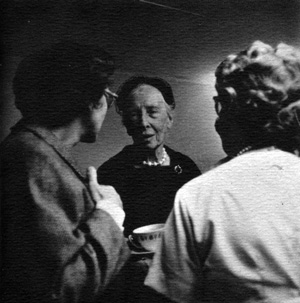
The university's requirements for additional student personnel services similarly have increased sharply as the institution has grown. Early in the year a dean of men was added to the staff of the dean of students. The appointment of a dean of women and an assistant to the dean of students for off-campus housing was announced as the year closed.
Thus the university's services for students have been strengthened concurrently with the academic programs. Student supervision, with a resident advisor system in the dormitories, was much improved; related efforts within the cadet dormitories also showed gratifying improvement in student performance.
In other areas of student services, the Placement Office initiated a senior and graduate student orientation program; terminal interviews were initiated with graduating seniors and graduate students. An employment service for students and alumni for both on-campus and off-campus employment is now being organized.
Strengthening of the university library to meet the rapidly growing requirements of the university's academic programs has become a most urgent requirement. A major gift of $100,000 the previous year, payable in two annual $50,000 grants, permitted substantial expansion of library holdings this past year; nearly 21,500 volumes were purchased and cataloged, along with additional periodical publications.
Library holdings now total about 366,500 volumes. The building of an adequate library collection for the diverse needs of the university is a top priority requirement for V.P.I. Many requests for book purchases cannot now be approved because of inadequate appropriations. Included in capital outlay planning for the next six-year period is a total of 1.8 million dollars for purchase of books and periodicals for the library to eliminate deficiencies in this area.
Along with other state institutions of higher education an inter-library teletype service was instituted in the past year to facilitate requests for materials from other libraries and to permit the use of specialized collections at V.P.I. and at other institutions by larger numbers of students. A copying machine also was installed for quick copying of materials
The Cooperative Program, in which students alternate study on the campus with work in business and industry, was extended to include mathematics, industrial engineering, mining engineering, and business administration. Co-op Programs in aerospace engineering, chemical engineering, civil engineering, electrical engineering, mechanical engineering, metallurgical engineering and physics had been established earlier. About 1,000 students were studying and working in the program this past year.
Organized for the summer of 1965 was a precollege orientation program in four of the colleges for parents and new students — those who will enroll this fall — aimed at easing the way for the students as they enter the university.
The fact of growth and intellectual ferment on the campus, the problems and opportunities, the men and women dedicated to the educational process, all contributed to the excitement and diversity of the university. The year now ended was but prelude to another.
The Resident Colleges

Agriculture
Architecture
Arts And Sciences
Business
Engineering
Home Economics
Graduate
Agriculture
Approximately 650 students, graduate and undergraduate, were enrolled in the College of Agriculture for the 1964-65 academic year. Enrollment, up about 50 from 1963-64, increased more than twice the national average for colleges of agriculture.
Yet the employment opportunities for agricultural graduates are increasing more rapidly; the demand was more than double the graduates available in the year. All indications point to a continuation of this increasing demand.
In the summer of 1964 the college developed a pre-orientation program for freshmen, the first such program on the V.P.I. campus. Freshman students and their parents were invited to the campus during the summer to familiarize themselves with the university and its curricula.
Both students and parents were quite favorably impressed. The pre-orientation for freshmen and their parents subsequently has been adopted by three of the other colleges at V.P.I. for the summer of 1965, along with the College of Agriculture.
A strong program of instruction is essential for the continuing development of the industry of agriculture in Virginia. The re-evaluation, consolidation and strengthening of the instructional program remained a major objective of the faculty during the year.
This continuing review of the various disciplines within the college has resulted in a series of changes aimed at more efficient use of faculty, and to enable the students to better utilize their time. Among them were consolidation of undergraduate courses into single offerings in the areas of plant breeding, reproductive physiology, horticultural morphology, and an introductory course for freshmen. Interdisciplinary graduate programs are being developed in genetics and animal science.
Twenty-eight freshman scholarships in agriculture are now available, including three new $500 scholarships for entering freshmen provided by the Atlantic Rural Exposition, Inc. There remains a critical need for additional scholarship funds for high ability freshman students and to provide sophomore and upperclass scholarships. Only one sophomore scholarship is now available.
The development of a guidance and counseling handbook for faculty with responsibilities in this area has increased both the effectiveness of the counseling program and the efficiency of faculty time. Also an outstanding program has been organized for student research participation; it has developed as an honors program and as challenge for both faculty and students. The program permits students to work with an outstanding scientist on research projects as junior researchers.
In 1964-65 a notable series of departmental and college visiting scholars were brought to the campus for lectures, seminars, and other events. They included Dr. William A. Duerr of Syracuse university, a forest economist; Dr. Clifford G. Hildreth, professor of economics, agricultural economics and statistics at the University of Minnesota; Dr. John C. Bowman, chief geneticist for the research division of Thornber Bros. Ltd., of Halifax, England; and A. F. Purser, supervisor of sheep selection programs for the Animal Breeding Research Organization in Edinburgh.

Architecture
In the fall of 1964 the College of Architecture began its first full year as a separate college with a substantial increase in enrollment. A total of 356 students, including masters' degree candidates, enrolled in the newly reorganized college; Architecture accounted for more than 20 per cent of the approximately 500 student increase in university growth over the previous year.
This undoubtedly is symptomatic of the broadening interest in the environmental design professions. In the face of a doubling of the nation's urban population in the remaining years of the century, the demand for new dimensions of form and order for man's environment will continue to motivate interested students. The land-grant universities will face increasing demand for the education of professional people to help in the resolution of these concerns.
In this context a faculty committee, meeting throughout the year, has developed a 10-year growth framework plan defining the new programs, graduate options and necessary restructuring of curricula. This work suggests several new undergraduate and graduate programs; it also develops a concept for interdisciplinary concentrations in which graduate study programs are designed for specific areas of environmental concern. It suggests, too, the use of a team teaching program.
As a result, several additional options for study have been recommended for inclusion in the curricula for the coming year. One of these, a new option in architectural engineering, will provide professional training in the rapidly expanding area of mechanical design for buildings. It will parallel, and is patterned after, the successful option in structural design which has been offered for many years.
Among the first mechanical design options to be sponsored by a college of architecture in this country (jointly offered by the College of Engineering), it underscores the increasing importance of the environmental technologies in architectural developments.
Another option will make it possible again to accept students, after a lapse of several years, for the degree of Master of Architecture. This program, concentrating upon urban design, will be an architectural complement to the present program in urban and regional planning and will utilize the resources available to V.P.I. students in the Washington Program in Urban Studies.
The Washington Program in Urban Studies, a residency program for graduate planning students in the nation's capital, was organized by the college for the first time this past year. It is designed to afford the students an unparalleled opportunity to study and observe the policy-making machinery of planning in Washington. The program has gained national attention; attracted to its seminars were visiting lecturers of prominence from the many public and private agencies in Washington.
Also during the year the College of Architecture held its first continuing education program with a 3-day symposium on college planning and design. Of much current interest to Virginia architects, it attracted more than fifty architects and planners, and several from states as distant as Montana. Visiting lecturers and distinguished scholars continued to visit the college to lecture, to provide technical criticism for design work, and to hold seminars for students and faculty. Similarly the faculty continued active attendance and participation in professional symposia and conferences, and during the summer period were engaged in research and consulting work throughout the world.
Increases in enrollment and in the expansion of offerings have required the recruitment of several new faculty members for the coming year. They have been selected to add balance and strength to the several curricula. During the coming year the faculty will continue to seek ways to strengthen the college's offerings and to meet the challenges apparent in the years ahead.

Arts And Sciences
Approximately one-half of the teaching responsibilities of the university now fall within the College of Arts and Sciences, which has been organized as a college only since 1962. Its growth has been quite rapid as V.P.I. has moved to balance its academic programs. Fall enrollment totaled 1,266; almost half of the co-eds at the university are students in the college. More than 200 of its students were seeking advanced degrees.
In addition to its own major programs, the college provides many general education courses for students in other colleges: mathematics, physics, languages, chemistry, and many other areas. It also offers pre-professional curricula for medicine and several other fields. In this past year experimental history courses were developed for freshman engineering students, along with a political science reading course for juniors and seniors in mechanical engineering. The first doctorates in mathematics to be awarded by the university also were granted during the year.
These developments were of understandable pride to Dean G. Burke Johnston, who had served as dean of applied science and business administration since 1950, and who became dean of the College of Arts and Sciences when it was organized in 1962. The college developed from the complex of supporting courses provided for students in engineering and other professional fields.
Dean Johnston, a nationally recognized Shakespearean scholar, meanwhile has accepted appointment to the newly established C. P. Miles Professorship to return to full-time teaching and research. He had continued part-time teaching while serving as dean.
Dean Johnston's new position, the C. P. Miles Professorship in English Literature, was one of two special professorships created by the Board of Visitors during the year to assist in the strengthening of the faculty by attracting outstanding scholars. It was named in honor of Dean C. P. (Sally) Miles, who retired in 1950. He had served many years as dean of the college, as athletic director and coach, and as professor of modern languages.
Dr. Leslie F. Malpass, professor and chairman of behavioral sciences, and also director of the Office of Sponsored Research, at the University of South Florida at Tampa, has been appointed to succeed Dr. Johnston as dean of Arts and sciences. A psychologist, he is a graduate of Syracuse University, where he also received his Ph. D. in clinical-experimental psychology in 1952. Before going to South Florida in 1960, he had taught at Southern Illinois University.
The efforts of the university to strengthen substantially its liberal arts areas were successful in adding outstanding additional faculty members; faculty recruitment for the coming academic year also has been encouraging.
Conversely there have been some faculty losses, to other institutions, to retirements and deaths. On balance, however, the recruitment of well qualified teaching and research faculty members has made excellent progress.
Planning for better utilization of the strengthened faculty and for a broader program to meet the demands for additional liberal arts offerings has been under way during the entire year. The demand in such areas as history, political science, and philosophy is growing very rapidly.
Similarly the academic structuring of a major in health and physical education is virtually complete, The physical education and intramural athletic program at V.P.I. has grown quite rapidly; physical education enrollment approximately doubled from the previous year, to 1,077 students in 37 classes. Faculty and graduate student participation in the intramural athletic program also doubled.
Noteworthy is the growth of the teacher education program. Approximately 75 students began teacher education programs or are candidates for degrees which would prepare them for positions as secondary school teachers or school administrators. The students major in the subjects they later wish to teach and also take the required professional education courses for teacher certification. The first student teacher group majoring in the academic disciplines began its in-the-classroom work in Roanoke last winter. The program, aimed at helping meet Virginia's growing need for teachers, supplements the older vocational education programs at V.P.I. which train vocational education teachers, supervisors and administrators.
The college's academic programs for aerospace and military training are being revised. The Air Force ROTC revision has been implemented; the lecture method of teaching has been largely replaced by "dialogue": instruction, with emphasis on seminars and student panels. Revision of the military science program will be effective this fall.
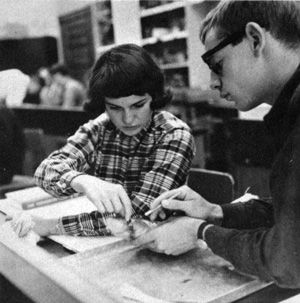
Business
Students in the College of Business are offered a broad educational background combined with professional preparation for a career in the business world. Their number is increasing quite rapidly; enrollment climbed 15 per cent this past year and 10 per cent the previous year.
Fall enrollment totaled 1,082, including students in the master's program; a small number of coeds also were enrolled. The college departments include Accounting, Business Administration, and Economics; majors are offered in all three departmental areas. In addition, majors are offered in public administration and business education, in cooperation with the Departments of History and Political Science and Education, respectively. The Department of Economics cooperates with the College of Arts and Sciences in offering a major in economics in that college. The College of Business also provides supporting courses for students enrolled in other colleges on the campus. Many students enroll in the College of Business in preparation for law school.
Major emphasis remains on high-quality instruction; many of the curricula have been revised during the year. Obsolete courses have been eliminated, new courses added, and others revised to reflect the importance of the quantitative approach and scientific decision making. The trend of student interest away from general business and public administration and toward accounting, economics, management and marketing was apparent throughout the year.
The faculty has been strengthened by the employment of new members with good teaching experience, terminal academic qualifications and business and governmental experience. Seven new faculty members were employed during the year. The interest and enthusiasm for professional development of the faculty have been well demonstrated by work on advanced degrees and participation in industry programs. An increasingly large number of research papers also was published or presented for professional societies. A number of significant research projects is in progress; the new Computer Center is playing a major role in some of these research efforts.
The Visiting Scholars Program had a highly favorable impact on faculty and students during the year. These scholars included Dr. Paul Green, Dean of the College of Business Administration at the University of Illinois; Dr. Fritz Machlup, distinguished Professor of Economics at Princeton University; and Professor Almond R. Coleman, Professor of Accounting at the University of Virginia.
The first business cooperative students enrolled during the fall, and these men have accepted work assignments all over the south and east for the summer. A number of additional firms have made plans to join the program during the coming year.
Through the efforts of Dr. Martin C. Schnitzer, Professor of Business Administration, a grant was secured from the Area Redevelopment Administration for the purpose of establishing a Center for Economic Research and Business Services by the College of Business. Dr. Schnitzer desired to remain in teaching and research but agreed to organize the Center and served as acting director until Dr. Paul Wischkaemper was appointed Director, effective April 1, 1965.
There appears to be an unlimited potential for service by the College of Business, especially in the area of continuing education; but this potential cannot be reached with present size of faculty.
Much of the success attained by the College of Business has resulted from the willingness of present faculty to accept extra duties above a maximum teaching load and to work in crowded conditions. Active recruiting of outstanding faculty members to fill vacancies continues and some adjustments are being made to relieve crowded working space.
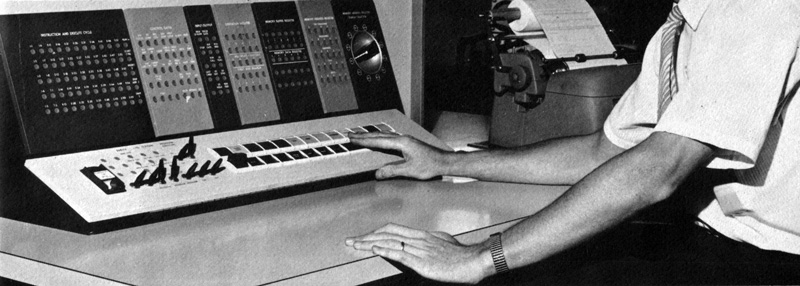
Engineering
In an era when technological change occurs so rapidly it is imperative to adapt continually engineering curricula and methodology to the advances of science and the contemporary requirements of industry.
The Engineering faculty is heavily involved in curricula studies for this purpose. This past year these studies have resulted in extensive revision of the third and fourth year programs in all engineering areas. Curricula revision has been designed also to infuse new vitality into the materials of teaching and to structure a more efficient and realistic four year program. Graduation requirements have been reduced to a minimum of 208 credits; the required summer term has been eliminated for all curricula except chemical engineering.
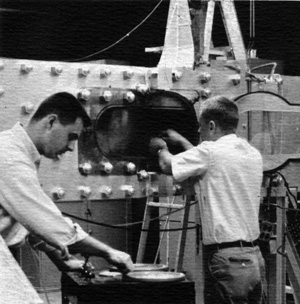
The largest college within the university, the College of Engineering enrolled 3,029 students, including 271 candidates for advanced degrees in the fall of 1964. Perhaps the most striking evidence of the college's growth was the increasing competence of the students at both undergraduate and graduate levels.
Bachelor of Science degrees were awarded to 531 candidates, a five per cent increase. The 20 Ph. D. degrees awarded to engineering candidates compares with only seven last year and two in 1963, and indicates the rapid strengthening of the graduate programs.
Similarly the first five Ph.D. degrees in civil engineering were awarded in June, although this degree has been awarded in sanitary engineering — a major in the Civil Engineering Department — for some years.
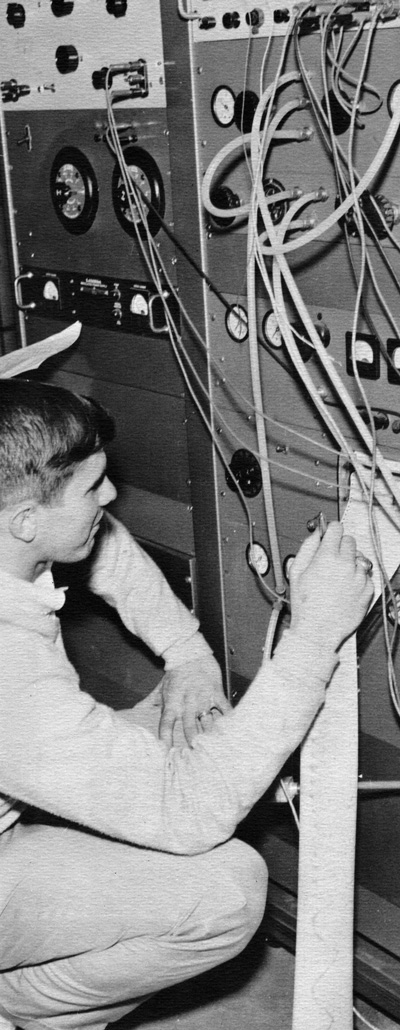
The continued strengthening of the faculty, a process which becomes essential as new techniques and technical data are developed, remains a major objective of the college. Intensive recruiting efforts provided substantial progress in this area; 20 full-time faculty members were added in engineering. Eighteen of these new faculty members, many with substantial teaching experience, hold doctorates from 13 leading universities and add particularly important support to the growing graduate program.
Soon to be filled is the John W. Whittemore Professorship in Engineering, a special professorship authorized by the Board of Visitors during the year. The special professorship was named in honor of the late Dean John W. Whittemore, former dean of engineering who retired in 1963. He had joined the V.P.I. faculty in 1928.
With the emphasis on appropriate curricula changes there was also developed a more effective freshman counseling system, organized at the beginning of the academic year. Four faculty members accepted part-time assignments to the counseling office, providing a full-time counseling service and a central location readily available to first year students. Counseling was made available to all freshmen, but those with developing academic problems were directed to the counseling office for interviews.
This program is being expanded during the summer into a pre-orientation program for incoming freshmen and their parents, including individual interviews with all new students. The counseling program is designed to provide better selections of students and better understanding of educational goals and recognition of the academic work required to attain them.
All of these developments were designed to add strength and balance to the engineering programs. Twelve accredited undergraduate degree programs are included, the highest of any engineering institution in the south and the second highest in the nation. Masters' and Ph. D. engineering programs are offered in aerospace, chemical, civil, electrical, mechanical engineering and engineering mechanics. Materials Engineering Science was added this past year. Masters' programs only are offered for agricultural, ceramic, industrial, metallurgical, mining. water technology and wood construction.
Also during the year an extensive expansion of research activities was achieved; sponsored research programs more than doubled during the year. Expenditures for replacement of obsolete equipment and purchase of additional equipment totaled more than $200,000-more than half of which was made available without cost by industrial friends of the university.
Faculty members served as consultants for a long list of industries, many of them in Virginia. A series of short courses were offered in several fields, and the annual summer space conference concerned itself with "The Role of Simulation in Space Technology."
Home Economics
The family has long been a major factor in determining the behavior, beliefs, values and, aspiration of the individual, and in the patterns of development of young people. In a rapidly changing society the continued viability of the family unit and the success with which it fulfills its functions will depend to a large extent on the quality and success of the educational and research programs which focus on the family and its concerns.
Thus the College of Home Economics is involved in one of the increasingly important fields of learning at V.P.I. The college's research efforts were strengthened substantially during the year. Research projects completed or now in progress involve clothing and textiles, child development, consumer education, and human nutrition.
Several of these research studies are related to southern regional efforts in the same area. Another, on the possible effects of the use of insecticides on beef quality, is part of an inter-regional effort in home economics to investigate the hazards of the increasing use of insecticides on foods for human consumption.

A continuing faculty review of the home economics curriculum has resulted in substantial revision, designed to meet contemporary professional opportunities in home economics and to adapt the curriculum to changes in the field.
Involved were the changing of seven undergraduate courses, the elimination of five others, and the addition of eight new undergraduate courses and four graduate courses.
The faculty also has designed a curriculum option for students who wish to teach home economics in high school within each of three departments of the college and in the inter-disciplinary major of general home economics.
Enrollment in the college increased slightly; fall enrollment totaled 110, including graduate students. Severe limitations on enrollment in the college are imposed by the lack of housing accommodation for larger numbers of women students and the lack of more adequate physical facilities for the college itself. The new College of Home Economics building, which soon will be under construction, will relieve this difficulty. The provisions now being made for expanding co-ed enrollment also will permit the admission of larger numbers of women students seeking to study home economics at V.P.I.
It should be noted, also, that the Home Economics Extension program, designed to disseminate the results of research and investigation in the area of home economics throughout Virginia, is an important part of the college's role. Approximately 35 per cent of the faculty time was allocated to services as subject-matter specialists in the extension program.
Graduate School
The significant development in the graduate programs of the university in the past year has been the strengthening of curricula. The addition of appreciable numbers of research-oriented faculty, with good teaching experience, has injected fresh ideas and new approaches into each program, resulting in appropriate re-evaluation of all offerings.
Consequently many new graduate courses have been proposed, many out-dated ones deleted, and the content of many other courses substantially revised. The process is a continuing one and requires persistence and patience. Its effectiveness, however, is apparent.
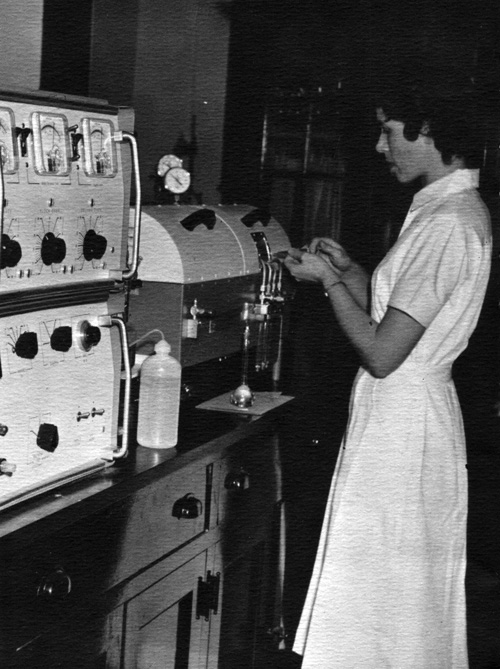
At the end of the academic year the Board of Visitors authorized a full-time dean of the Graduate School, a position which traditionally has been filled by the university's vice president. Earlier the Board had created the position of associate dean of the Graduate School, which had been filled on a part-time basis.
Dr. Fred W. Bull, who last year was named director of the Engineering Experiment Station, was appointed to fill the new position of dean of the Graduate School, responsible for the direct administration of the graduate programs.
Together with major changes in the membership of the Graduate Committee itself, and the efforts to provide a more ordered structure for the graduate programs which occurred in 1963-64, these developments have materially strengthened the entire graduate program.
Total graduate enrollment is growing steadily, but the Graduate School is not yet large. Fall enrollment was 733, including 59 women candidates. Exactly 500 were candidates at the masters' level; 233 were Ph. D. candidates.
The university awarded 225 graduate degrees this June: 153 master of science, 11 master of education, 9 master of urban and regional planning, and 52 doctorates.
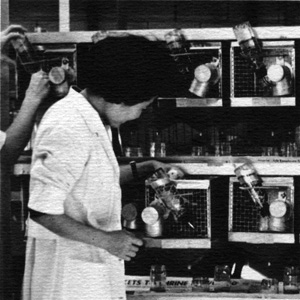
The caliber of incoming students has shown noticeable improvement with the continuing efforts of the university to attract outstanding faculty and graduate students. The retention of graduate students who are achieving at below minimum progress has been reduced sharply, adding significantly to the over-all quality of the program.
The research activity associated with the strengthening of the faculty and student body also has been accelerating. Competition for available research support, particularly in the area of federal research grants, has sharply intensified, and the level of research support has climbed sharply.
These efforts are of prime significance in the attraction of outstanding graduate students and the expansion of the graduate program. Continued development of resources for graduate student support is vital for further improvement. Efforts to assist graduate teaching assistants to achieve a high level of competence in their teaching duties have been intensified. A series of seminars and conferences and individual and departmental programs have been designed to assist the professional development of the new teacher.
This type of educational program for those who do a small but important segment of the teaching on campus is essential in maintaining the quality level of instruction required at the university. In many cases graduate teaching assistants have been doing particularly fine teaching.
One of the major objectives of the coming year necessarily will be the development of more efficient recruitment of high-quality graduate students and the development of adequate attractive support for them. Continued emphasis has been placed on recruiting of faculty who have a commitment to excellent teaching and who also seek the opportunity for significant research.
Research
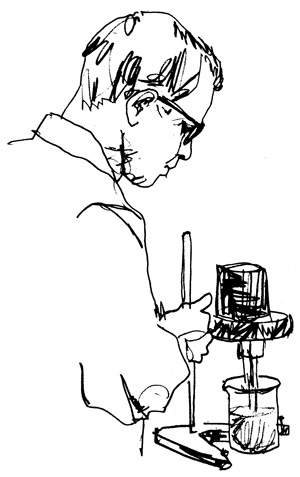
Nearly every department, division and college of the university is heavily involved in research. The activities of both the Engineering Experiment Station and the Agricultural Experiment Station have expanded substantially in the year now ended. Research funding in non-agricultural areas more than doubled during the year, totaling more than a million dollars. New funding for agricultural research totaled more than $675,000. With current increases in the tempo of research activity, the totals very likely will double again in 1965-60.
The Agricultural Experiment Station dates back to 1886 and is part of a nation-wide system of agricultural experiment stations supported jointly by state, federal and private funds. More than half of its current four million dollar annual budget is channeled into commodity research, aimed at solving problems of immediate concern to Virginia farmers and processors.
The Engineering Experiment Station, established as a separate research agency by the General Assembly in 1950, administers the research programs for the Colleges of Arts and Sciences, Business, and Architecture, as well as for the College of Engineering. Sponsors of the research activities in both stations range from industrial and business firms to nearly all branches of the federal govern ment involved in research funding.
The leadership of both experiment stations is now changing. Dr. Harold N . Young, director of the Agricultural Experiment Station for 20 years, retired June 30; he was succeeded by Dr. Coyt T. Wilson, former assistant dean of the School of Agriculture and associate director of the Agricultural Experiment Station at Auburn University. Dr. Wilson came to V.P.I. last year as associate director of the Station; Dr. P. H. Massey Jr., associate dean of the Graduate School, succeeded Dr. Wilson as associate director.
Because of the importance of the university's research effort in relation to its graduate programs, the appointment of Dr. Bull to head the administration of the Graduate School is especially significant. The university's rapidly developing graduate programs must be carefully related to research needs in many areas.
As Virginia's land-grant university, V.P.I.'s research efforts are increasingly significant as the Commonwealth evolves into a more urbanized and industrialized state. The university's services — to business and industry, to farm and farm-related supply and distribution firms, to rural and urban communities — have been expanding rapidly, along with the economic and technological changes so apparent in Virginia. The demands for such services are increasing in direct proportion to the growth of Virginia's economy, and consequently will develop at an even more rapid rate in the years ahead as the Commonwealth broadens its industrial base.
The basic and applied research of the university ranges from investigation of new industrial materials and techniques to soil fertility and plant variety development; from problems of interpersonal relationships to textile evaluation and nutrition.
In chemistry and physics, in biology and the life sciences, in almost the total range of man's interest and knowledge — from microbes to complex life processes, from soil analysis to rocketry and outer space — research projects are constantly developing.
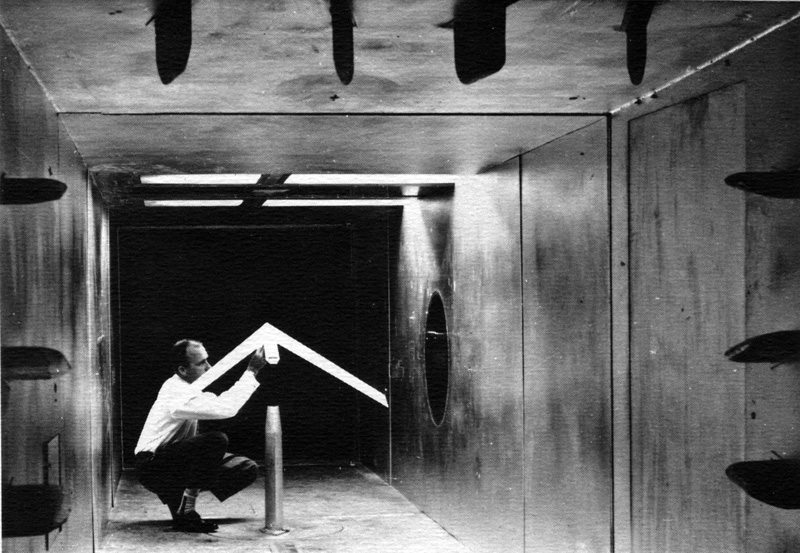
Research provides the basis for continuing technological improvements in industry, business and agriculture. Similarly the research efforts provide the foundation for much of the university's graduate and extension training programs. More than any other activity at V.P.I., research develops the basic data to assist Virginia in adapting to the changing times and changing conditions in which the family, the citizen, and industrial and business firms must function.
Hundreds of professional scientists participate in these research efforts along with their teaching responsibilities; others are involved in full-time research. They serve on regional and national technical advisory committees and cooperate with several federal agencies. Some are involved in scientific and development programs of other nations.
Two of the largest research proposals approved during the year were a $286,503 project involving coal mining and coal utilization for the Department of the Interior's Office of Coal Research and a $200,000 project for the National Aeronautics and Space Administration (NASA), involving multi-disciplinary research in space related areas.
These are substantial projects, involving many researchers and fairly large budgets. Many hundreds of individual projects are constantly being initiated at the university. For example, very recently the National Institute of Dental Research funded a $76,000 project, under the direction of Dr. Charles R. Houska, for the investigation of the properties of various dental alloys.
One of the most significant research programs in the life sciences at the university, conducted by Dr. W. E. C. Moore, has resulted in a reference collection of anaerobic bacteria of worldwide origin, with the development of techniques for culturing these intestinal bacteria. The implications of this research, as more becomes known about such bacteria, are far reaching; they extend into medicine and communicable disease control.
Several research-related developments during the year will have a major impact on the university's research capabilities. One was the establishment of the VPI Computer Center, which makes available modern electronic computer equipment for research purposes. A $50,000 National Science Foundation grant was obtained to help the initial organization of the Center.
Another was a $300,000 gift from an anonymous donor for the establishment of a molecular structures laboratory, complete with electron microprobe and electron microscope. The funding included the operating costs of the laboratory for 10 years.
A research effort of major proportions similarly will develop out of the Virginia Water Resources Research Institute, a statewide agency organized at V.P.I. under the federal Water Resources Research Act. The legislation authorized such an institute in each of the 50 states, with an arrangement with the Science Information Exchange to prevent duplication of research efforts.
The formulation and submission of research proposals have been increasing .sharply during the year. In the month of April, for example, research proposals exceeding one million dollars were submitted for possible funding. The strengthening of the faculty and the development of broader research capabilities have resulted in the rapid growth of the university's research efforts during the year now ended.
Extension And Community Colleges
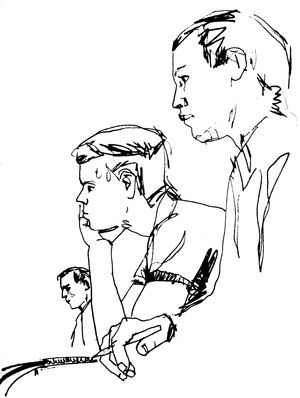
A land-grant university necessarily must operate as a statewide institution; its extension activities extend into virtually every community in the state. V.P.I.'s long history of effective farm and home extension work is well known. The university's extension services now are being adapted to the basic changes apparent in Virginia's economy.
Both the agricultural and general education extension programs are providing increasingly valuable services to Virginia, along with the growing services of V.P.I.'s community colleges. With the opening of the Clifton Forge-Covington Community College in the fall of 1964 with more than 100 students, four community colleges have now been developed.
All four — the others are at Danville, Roanoke and Wytheville — will be operating at or near capacity when the 1965-66 session begins. With the intense admissions pressures developing at the main campus at Blacksburg, it has been possible to admit many of the students to the branch colleges for their first and second years of college work. Later they will move to V.P.I. as juniors when additional facilities will be available to accommodate them.
Consequently nearly 1,800 students will be enrolled in the fall of 1965 in the four branch colleges, where two-year programs are available in agriculture, architecture, arts and sciences, business, engineering and home economics. Total enrollment will more than double that of the 1964-65 school year, when approximately 850 students were enrolled.
The location of a community college in a locality where no college previously existed tends to broaden the educational aspirations of many more students. Once a community develops facilities for education beyond high school, increasingly large numbers of young people begin to broaden their personal perspective, and seek more educational opportunity.
This is the story of virtually every community college that has been established. In Virginia, particularly, where only a small proportion of the college-age group traditionally has been going on to college, the trend is quite noticeable. The demand for adult education activities similarly begins to rise with almost predictable intensity.
In addition to the college work at the four community colleges, several other programs are of importance. The two-year technical program at Roanoke Technical Institute offers a terminal training in engineering technology and the applied sciences; it is designed to train qualified technicians and is an important part of the branch college work. Several two-year terminal programs are offered at Danville Community College.
A nurses training program has been established at Danville and Clifton Forge-Covington in conjunction with local hospitals; all academic work for the program is supplied by the college and in-hospital training by the hospitals.

Programs for special students have been developed at all of the community colleges, designed to help correct academic deficiencies for selected high school graduates with obvious potential, but who are not able to enter college before making up essential pre-college work. This program is of particular importance to students of ability with poor academic backgrounds.
As part of the university's general education extension work, each of the community colleges also developed programs for persons in the community who wish to continue their educational activities. Classes in art, literature, and other subjects have been made available in response to community demand. For example, the newly opened Clifton Forge-Covington branch made available a very successful art course for the community this past year.
The physical facilities at the community colleges are being developed to meet the enrollment demand and to coordinate their growth with that of the university. At Roanoke the city has indicated it will provide an additional 17 acres adjacent to the present R.T.I. campus; when this property is obtained, two existing structures will be adapted for temporary classrooms and offices. A new classroom, office and library building is projected to open in the fall of 1967.
Danville's new community college building was opened in September, 1964; a second structure is also planned as funds become available to accommodate the steadily climbing enrollment. Similarly, the Clifton Forge-Covington branch which opened last fall will require a second building in 1970-72.
The Wytheville Community College completed its second year with 235 students; enrollment will exceed 400 in the fall of 1965. Since this will be more than the capacity of the building, the Wythe County Board has agreed to enlarge the structure with a second floor addition to the annex completed two years ago. The county made the building available pending appropriation of state funds for construction of a new college building.

Aside from the community college programs, the university's extension work has provided increasingly important services to Virginia. A series of courses have been offered both on and off the campus during the year. They included short courses for industry, for state and federal agencies, and for other specialized groups, including such companies as Western Electric, General Electric, the Celanese Corporation and the Brunswick Corporation. The work has been made available in the company plants, as well as on campus. A total of about 800 students was involved.
The summer program at the university brings large numbers of Virginians to the campus for short courses, conferences and similar activities. This area of extension work will be substantially expanded when the new building for the Continuing Education Center is completed.
Also organized during the year was the Center for Economic Research and Business Services in the College of Business, initiated with a $68,000 grant from the Area Redevelopment Administration. It was designed to provide research services and managerial assistance to business firms in southwest Virginia.
The resources of the college thus are available to provide technical assistance in the organization of new business firms, in market studies and market expansion, and similar activities. Although the ARA financing has restricted the Center to work primarily in nine southwest Virginia counties, the requests for assistance have exceeded expectations; requests from other areas indicate the need for such services throughout the state.
In agricultural extension the 1964-65 story is that of change; basic changes have been evident for decades in the industry of agriculture and in the field of home economics. Urban and rural non-farm people increasingly are requesting technical assistance in many areas. Work with marketing and supply services, dealers, distributors and manufacturers, aimed at increasing the operational efficiency of their enterprises, is becoming vitally important.
Thus in the year now ended the changing emphasis within the agricultural extension program has been quite apparent; the basic needs and desires of rural and urban people no longer can be clearly separated as the trends toward urbanization and industrialization of Virginia develop more rapidly.

The Virginia Agricultural Extension Service, operated cooperatively with the U. S. Department of Agriculture and the governing bodies of Virginia's counties and cities, is particularly sensitive to these changes. Farm and home extension agents live and work in the communities, in close contact with community opinion and community trends.
Consequently a major effort in the year now ended has been a general redirection of the work of the extension staff in non-farm areas — involving 106 county positions and 18 state positions. This changing emphasis extends from the research programs, on which are based so much of the Service's educational efforts, to the daily contacts and educational programs within each community.
The areas of most important emphasis now emerging include management, consumer education, resource development, family economics, work with low income groups, home economics education, marketing, ornamental planting, urban soil problems, and 4-H programs in non-farm areas.
In-service training programs, graduate study and other activities have been designed for the professional development of the extension staff, to permit better extension service in all areas, and to conduct extension programs of greatest need in the local communities.
In this context the Extension Service also has submitted to the federal Extension Service its plans for compliance with the 1964 Civil Rights Act. The administrative staff has been working very closely with federal officials in adjusting programs to bring them into compliance with the legislation.
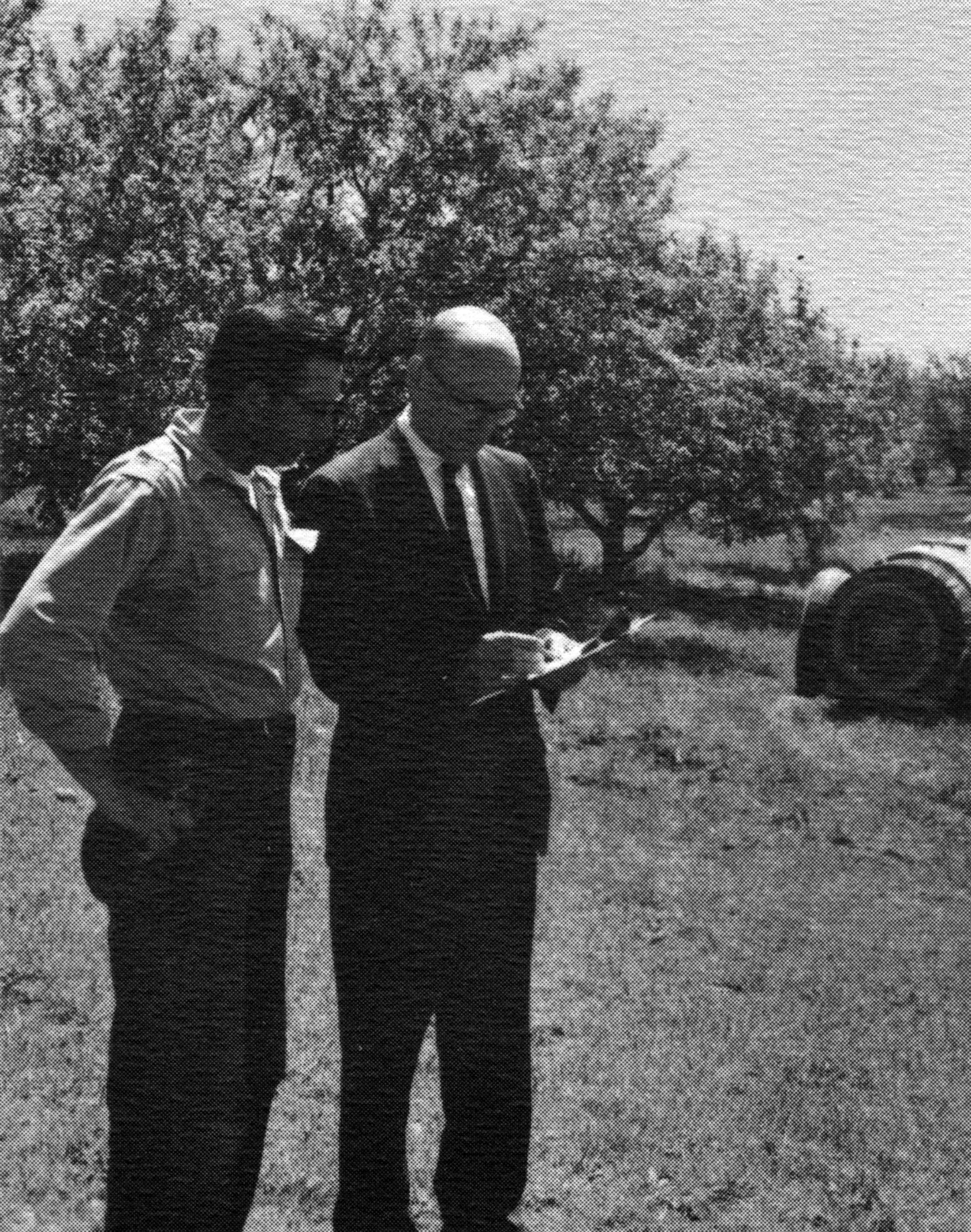
The Virginia Agricultural Extension Service is the agricultural extension arm of the state's land-grant university, disseminating information about new concepts and developments in agriculture and home economics and related areas. Its formal organization dates back to the Smith-Lever Act of 1914; its total staff now exceeds 450 professional people, dedicated to the social and economic advancement of Virginia.
In all of V.P.I.'s extension activities, the goal is better service to Virginia; service to help the personal development of Virginia citizens, to help them adjust to changing times and conditions. The land-grant university's role in an era of increasingly complex social and economic change becomes more challenging each year.
Campus Growth
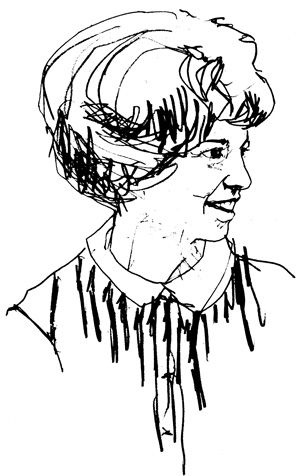
The growth of a university is measured in more significant terms than new buildings or additional square feet of building space. What happens inside the classrooms and laboratories and on the playing fields and research farms provides the meaning and substance of a growing institution.
An adequate physical plant in which to house the diverse functions of a university is, of course, essential. There must be the classrooms, libraries, laboratories and other research facilities, faculty and administrative office space, gymnasium and physical education areas, athletic facilities, student housing and activities buildings, and all the physical facilities so vital to the purposes of a modern university.
The magnitude of plant expansion required for V.P.I. to reasonably meet the rising demand for admission, and at the same time to improve the educational opportunities of its students is not small. Last winter the university's governing board, reviewing V.P.I.'s role in Virginia higher education, noted enrollment would essentially double within the next 10 years if a minimum development program were completed to accommodate the additional students.
The enrollment projections anticipate approximately 12,000 students enrolled by 1970, and about 14,000 by 1975, resulting from the state's rapid population growth and an increasingly large proportion of the college age young people seeking college work.
Based on this rising admissions demand, the university's leadership groups have developed a six-year capital improvement program to be financed from state funds totaling approximately 31 million dollars. An additional 19.5 million dollar construction program, for domitories[sic], dining halls and other revenue producing facilities, would be financed from bond issues.
The six-year program, compiled at the request of the State Budget Office for planning purposes, also contemplates a construction program of about 4.7 million dollars for the Agricultural and Engineering Experiment Stations, and about 3.3 million dollars for construction at the branch colleges.
Included in the six-year program are the housing facilities for accommodating a reasonable proportion of the projected enrollment increases, along with the necessary classrooms and laboratories. Some renovation of existing structures also would be required. As the university enrollment grows larger, building design concepts change; larger enrollments require the use of general purpose classroom, laboratory and office buildings, rather than specialized structures for limited use.
The growing enrollments similarly have made imperative the development of more adequate student activities facilities — both for resident students and the increasing number of commuting students. Plans for an enlarged student union building, to be funded partly from student fees and partly from state appropriations, are now being developed.
The provision of these facilities necessarily depends on the willingness of the Commonwealth to make the required investment, except for the bond financed buildings. Legislative approval, of course, will be required for even these.
Planning for future growth must be done with some care; the quality and comprehensiveness of the university's instructional and research programs must be considered as well as numbers of students and faculty. Where plant investment of this magnitude is required, it is also essential to increase the efficiency of the use of each building. The planning includes much more intensive use of each classroom and laboratory than now exists.
These were the specific plans developed during 1964-65 for the development of V.P.I. in the years immediately ahead. Even as the year ended the first steps in the transformation of paper plans to stone, and mortar were well under way.
Construction began in the spring on three of the projected new dormitories; site preparation is now well underway for a fourth. The four buildings will house approximately 2,500 students. In late June a 9.6 million dollar bond issue was marketed to provide funds for construction of the four dormitories, and for the renovation of Eggleston and Campbell Halls. These men's dormitories, housing 648 and 400 students, respectively, were constructed just prior to World War II.
The four dormitories are rising on the site of Miles Stadium, which was razed at the end of the 1964 football season to make way for the new facilities.
As has been noted, two dormitories housing 520 students were opened last fall. Bids have been received for construction of a long-planned continuing education center which includes the renovation of the former faculty apartment building. A contract has not yet been awarded; the bids were somewhat higher than anticipated and are still being reviewed. A total of $1,700,000 has been earmarked for the building, half of which was contributed from V.P.I. alumni and friends, and the remaining $850,000 was appropriated by the General Assembly.
Plans and specifications are now in preparation for the first phase construction of a College of Home Economics building and for a College of Architecture building. Planning funds were appropriated last year for the architecture building; the 1964 General Assembly also provided $425,000 for the initial construction on the home economics facility. Planning funds also were provided for an addition to Burruss Hall, the V.P.I. administration-auditorium building.
Extensive renovation of Davidson Hall (chemistry) has been completed; funds are now available for renovation of McBryde Hall (industrial engineering). Plans also are being developed for a laundry addition, additional greenhouses, and several other smaller facilities.
The finishing touches were applied, along with some 600 additional seats, to the Coliseum, a 10,000 seat facility overlooking the main campus. But easily the most impressive structure now taking shape on the campus is the new stadium.
Construction of the west side of Lane Stadium has been under way for some months; the playing field and west stands-including the press box and utilities-will be completed this fall. The first game, October 2, is with The College of William & Mary.
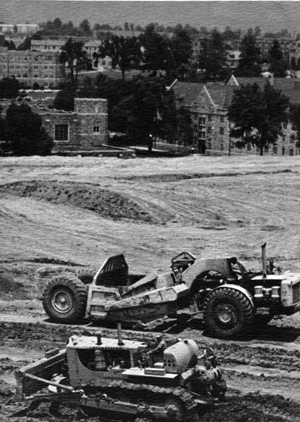
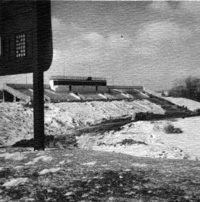

The stadium is being initially financed by gifts generated as construction progresses, although approval has been obtained for the temporary use of borrowed funds if this becomes necessary. When both sides of the structure are completed — the east side will not be constructed for several years — the stadium will seat about 35,000 spectators; total cost will be approximately three million dollars.
A new track also was completed in recent months, along with a number of all-weather tennis courts adjacent to the coliseum. Other tennis courts will be finished during the fall. Also under way is another major improvement: a half-million dollar airport project.
This involves construction of a new 4,600 foot runway at the V.P.I. airport, supplementing the existing 2,800 foot runway for the accommodation of larger aircraft. It has been financed by 50 per cent federal funds, along with funds from the State Division of Aeronautics and V.P.I. development funds. The project also involves the abandonment and removal of the Norfolk & Western Railway spur into Blacksburg, for which Interstate Commerce Commission approval has been obtained.
The necessity of sound planning for the development of the campus itself has intensified with the university's accelerated growth. In early summer the Richmond architectural firm of Carneal and Johnston, and Architects Collaborative, Inc., of Cambridge, Mass., were assigned the task of revising V.P.I.'s campus development plan, the so-called directional site plan. The present plan was last revised in 1960.
The rising tempo of community and university development is thus apparent; it contributes substantially to the atmosphere of excitement, growth, and vitality which has emerged at V.P.I. in recent years. Coupled with the efforts of the university to improve the quantity of its instruction and research, the growth of the physical plant achieves a larger importance than simply additional buildings and facilities.
Currently the value of V.P.I.'s physical plant is approximately 100 million dollars. Its value to Virginia in a less tangible but more vital context as a functioning university would be difficult to estimate. There is no doubt the intangible value of the institution will increase even more rapidly than the dollar investment required in the years ahead.
Alumni, Athletics And Support
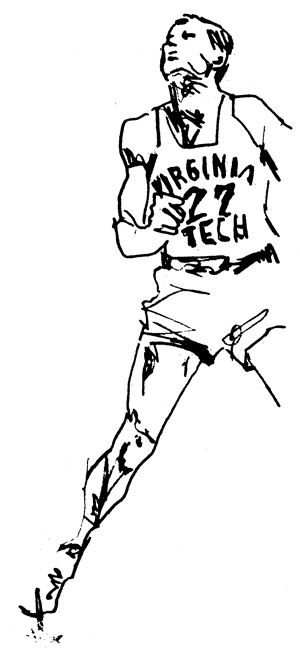
With the growth of the university and its increasingly effective efforts to strengthen its academic base, the requirements for funds beyond those available hom state appropriations become imperative. The basic state appropriations for V.P.I. approximate 45 per cent of its annual operating budget, and much of the support of the university's efforts to provide both educational opportunity to larger numbers of students and to strengthen its academic and research programs must be obtained from private and non-state sources.
Unfortunately the students have been required to bear an increasingly large part of the cost of the university's development; half of the additional funds required for faculty salary increases, for example, must be derived from student fees. Under the state policy which has emerged since the 1964 General Assembly session, all of the cost of housing and food service facilities are being financed by student fees. These factors have forced fees to be increased well beyond the average for state land-grant universities. The trend somehow must be reversed, hopefully with more adequate state support as well as from the generation of greater private support for V.P.I.'s various programs. If it is not, rising costs will be such a hurdle that many well qualified students cannot get over it.
With the university's technical capabilities, and the large number of V.P.I. graduates going into industry and business each year, the opportunity for effective gifts and grants from industrial and business firms is well defined. Although private support for the university from this area in 1964-65 has not been outstanding, total private support has been indeed gratifying.
Contributions and gifts to the V.P.I. Educational Foundation for the year totaled nearly 2.7 million dollars for all purposes. This, however, has been the first year since the reorganization of the Alumni Fund as an integral part of the foundation.

Alumni support has been growing rapidly. Total alumni gifts for both special and unrestricted purposes totaled nearly $300,000 during the year; the figure the previous year was slightly more than $100,000. The two figures are not strictly comparable, however; the 1964-65 figure includes all alumni gifts, while the 1963-64 total includes only those channeled directly through the old Alumni Fund.
The generation of research support, from both federal and private sources, also increased sharply during the year; research grants and contracts totaled about 1. 7 million dollars, as was noted in the discussion of the university's research programs. Also noted there were several major gifts during the year, including funds for a molecular structure laboratory, which will substantially expand the university's research capabilities.
Other extremely significant gifts included $50,000 to be provided on an annual basis for the V.P.I. Educational Foundation Loan Fund for student loans, and the second $50,000 installment of a $100,000 gift announced during 1963-64 for library support. Both were the gifts of anonymous donors.
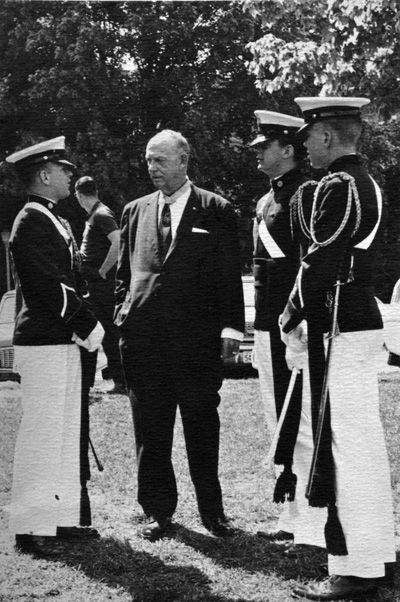
The Eclipse-Pioneer Division of the Bendix Corp. made available some complex instrumentation called a "satellite simulator," valued at about $100,000 for the V.P.I. aerospace program; it will be extremely useful in laboratory work on space exploration problems. Closer to earth, but quite important to the university programs, was the contribution of a twin-engine aircraft, valued at $35,000, also from an unidentified donor.
It is apparent the financial support of the university is being drawn from a broader base, as its educational and research efforts are strengthened. The generation of more significant private support in the years ahead must continue as a major goal of the university administration, because of the university's increasingly broad obligations.
Most heartening has been the rapidly increasing alumni support of their university. The alumni and alumnae group itself is growing quite rapidly; more than 1,300 V.P.I. students became members this past June. As the university's enrollments increase the number will become progressively larger each year. Already there are more graduates who attended V.P.I. since World War II than before.
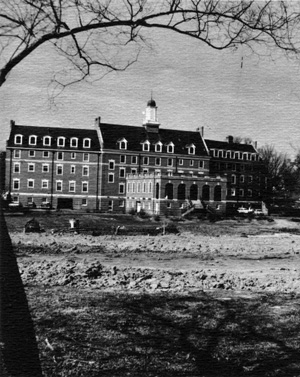
Going into a world beset with conflict and change, the former students are demonstrating a seriousness of purpose and a level of maturity that is indeed gratifying. Even as they leave the campus they are increasingly responsive to the problems and responsibilities of the university.
For example, in this past year the president of the civilian student body contributed a $100 annual scholarship for his successors in office, matched by an equal contribution from his employer.
The alumni group, which totals now well over 25,000, is organized in approximately 50 local clubs and chapters. Although largely autonomous, they retain a close working relationship with the Alumni Association and the university. A central office under the direction of a staff secretary has been maintained since 1926.
A distribution map of the alumni within the United States indicates about S6 per cent live in Virginia; the others are scattered across the nation and the world. As the university seeks to consolidate its resources for the larger tasks which it faces, the need to bring the alumni organization into closer relationship with the daily operations of the university is apparent. Substantial progress has been made in this area, and planning for a more appropriate organizational relationship is now being implemented.
Alumni support for V.P.I.'s growing intercollegiate athletic program also has been gratifying. Contributions from alumni and friends of the university for the Virginia Tech Student Aid Association and its athletic scholarship program for the first time exceeded $100,000 in the fiscal year now ended.
A critically important part of the athletic development program is the new stadium now under construction to replace Miles Stadium. The old stadium was razed at the end of the 1964 football season to be replaced by dormitories. Contributions and pledges for the new stadium now total nearly $600,000.
The new Lane Stadium, named in honor of E. H. Lane of Altavista, a member of the V.P.I. Board of Visitors and long an enthusiastic supporter of the university's athletic programs, is being constructed entirely from private funds. The generation of additional funds for the construction is essential.
Since the past season was the last in which Miles Stadium was the site of V.P.I.'s home football games, it appeared fitting that each alumnus and alumna should be presented with a memento of the structure — a physical reminder of college days and of V.P.I. memories.
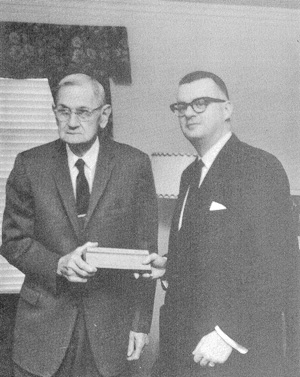
Consequently a small wooden pencil holder was made from the cypress seats of Miles Stadium and distributed to each alumnus and alumna for whom addresses were available. On each was inscribed "1926 — Miles Stadium — 1964." A brief message from the president also was included.
The response was heartening. Hundreds of letters were received expressing appreciation.
The athletic plant now includes the new coliseum, a new track, nine-hole golf course, an excellent baseball diamond, all-weather tennis courts and the necessary practice fields and parking areas. The new stadium, of course, will be used for the first time this fall.
The improved athletic physical plant complements an increasingly successful intercollegiate athletic program. The university maintains intercollege competition in 11 major sports, involving about 650 athletes in freshman and varsity play. The past athletic year was quite successful; the Gobblers emerged with a 6-4 record with a tough schedule. The basketball record was 13-10 with a squad dominated by sophomores.
On balance the entire program was satisfactory; in golf it was outstanding. The golf team won the Southern Conference championship and 11th place in NCAA national competition.
At the close of the 1964-65 academic year, V.P.I. resigned, from the Southern Conference, implementing a decision announced earlier. The university was the only remaining charter member of the conference, and prepared for the time being to move into intercollegiate competition as an independent.
The decision had not been unexpected. It was apparent with the increasing momentum of the athletic program at V.P.I., and the outstanding physical facilities being made available, that the university would seek to schedule games with more comparable institutions — particularly the state universities of the region.
It was also apparent that V.P.I. was making a serious bid to gain admission to the Atlantic Coast Conference, where the caliber of opposition would be consistent with its broadened academic base, and would provide the attendance for athletic events required to meet the financial requirements of its athletic program.
For The Record

"Virginia has found that as she competes with the nation for new industry, she must compete with the nation for faculty members and research fellows ... ," Governor Albertis S. Harrison Jr. observed in his commencement address for V.P.I.'s 1965 graduating class.
"Virginia is on the move. Economically, socially, culturally, and politically, growth and change are the order of the day, and the rate of this advance is constantly accelerating," the Governor noted.
At the commencement exercise for which Governor Harrison was speaker, held in the new coliseum June 13 for nearly 10,000 students, parents and friends, the university awarded 1,316 degrees, including 1,091 bachelors', 173 masters' and 52 doctorates.
Commissioned during the reserve officer commissioning exercises — or to be commissioned during the summer — were 130 Army ROTC graduates and 46 Air Force ROTC graduates. One graduate received his reserve commission in the U. S. Marines.
Retirements
There are more than 700 faculty positions within the six colleges of the university, along with more than 1,700 staff and non-teaching administrative positions. There is normally a substantial turnover in personnel, from deaths, resignations, and retirements.
Among the retirements this past year was Dr. Harold N. Young, 69, director of the Agricultural Experiment Station since 1946. He was replaced by Dr. Coyt T. Wilson, associate director of the station.
The senior faculty member of the university, Dr. S. A. Wingard, head of the department of plant pathology and physiology, retired also during the year. He had joined the V.P.I. faculty in 1917.
Dean G. Burke Johnston, dean of Arts and Sciences, left his administrative post to return to full-time teaching. He accepted the special C. P. Miles Professorship in arts and sciences.
Other major retirements during the year included:
Dr. Paul H. Farrier, director of admissions and records, 70, a former English professor who had headed the admissions office since 1946; he was succeeded by Dr. M. P. Lacy, who joined the admissions office staff in 1963.
Dr. Robert A. Fisher of the Department of Chemical Engineering, 30 years service.
Prof. Cecil A. Horst, professor of industrial engineering, 16 years service.
Prof. A. V. (Nye ) Morris, professor of mathematics, 42 years service.
Prof. Peyton T. Gish, assistant professor of agronomy, 39 years service.
Prof. John Rolfe Castleman, professor of engineering, 42 years service.
Prof. Paul B. Dyck, professor of hygiene, 36 years service.
Prof. William Lee Younger, professor of physical education, 44 years service.
Prof. Janet Lowe Cameron, professor of home economics extension, 33 years service.
Prof. Sara Catherine Peery, associate professor of home economics extension, 31 years service.
Two faculty deaths occurred during the year: Prof. Reginald A. Kenny, associate professor of English, and Prof. Charles D. Moody, assistant professor of accounting.
Appointments
Among the new names on the roster of V.P.I. faculty and staff was Dr. Leslie F. Malpass, professor and chairman of behavioral sciences at the University of South Florida, who succeeded Dr. Johnston as dean of arts and sciences. Dr. Malpass came as the 1965-66 budget year was begining[sic]. Dr. Fred W. Bull, director of the Engineering Experiment Station, similarly was named dean of the Graduate School, a new position.
Also announced at the outset of the new year was the appointment of Miss Audrey L. Rentz as V.P.I.'s first full-time dean of women. The 24-year-old Peekskill, N. Y., native received her master's degree from Penn State in June.
Earlier Raymond E. Keller, formerly assistant registrar at the State University of Iowa, was named registrar for the university. And last fall four new department heads were named: Dr. J. R. Nichols for dairy science; Dr. Leon W. Rutland Jr. for mathematics; Dr. Gerhard Beyer for chemical engineering; and Dr. James Beverly Jones for mechanical engineering. They came to V.P.I., respectively, from Pennsylvania State University, the University of Colorado, the University of Missouri, and Purdue University.
Dr. H. B. Couch, also from Pennsylvania State University, has been named head of the Plant Pathology Department, and effective August 1, Dr. R. S. Thrush of the University of Missouri will become head of the reorganized Department of Psychology and Sociology.
Early in the academic year Dr. George R. Powley left the post of head of electrical engineering to fill a vacancy in the special Westinghouse professorship in engineering; Prof. Ralph Wright has been serving as acting head.
Also last fall Col. T. M. Larner, head of the Army ROTC program at V.P.I. until his retirement in 1963, was named to the new post of deputy commandant of cadets.
Warren H. Strother, a former public affairs reporter for the Richmond Times-Dispatch, was named director of public relations last fall; later in the year Lon K. Savage, education writer for the Times-Dispatch, was appointed executive assistant to the president. Another newsman, William C. Burleson Jr. of the Roanoke World-News, was named director of news services. He replaced Mrs. Gene Smith Moody, who resigned.
Reubin A. Payne of Charles City was appointed to the staff of the office of admissions and records; his wife, Mrs. Mildred Aigner Payne, also was appointed to the V.P.I. Extension Staff.
Harvey H. Peterson of Williamsburg, a June graduate, joined the dean of students' staff as assistant for off-campus housing. And Larry L. Mangus, who received his master's in guidance counselling[sic] from Ohio University in June, was named to the newly created post of assistant to the dean of men for campus programs.
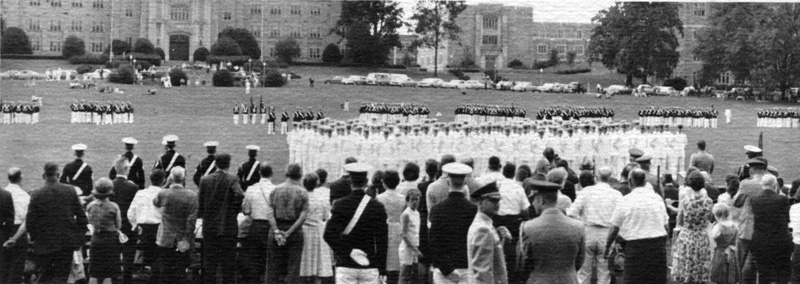
Budget
The total university budget for the fiscal year now closed was about 21.8 million dollars. This included about 1.2 million for administration and general expenses, including student services; 5.7 million for instruction and departmental research, including the branch colleges; about $350,000 for farm operations, flight instruction, the cooperative program, military affairs, and other activities related to the educational departments; 4.3 million for organized research; 5 million for extension and public service activities; $321,000 for library operations; $226,000 for heating plant; 2.9 million for the operation of residence and dining halls and other auxiliary enterprises; and about $290,000 for scholarships, interest, insurance and other costs.
Tuition and Fees
The Board of Visitors in late June authorized an instructional fee increase of $30 and a $132 room, board and laundry fee hike for the university, effective in September, 1965.
The new increases bring the instructional fee for Virginia students to $420 per academic year, plus an additional $420 for out-of-state students.
The new room, board, and laundry fee will be $657 per year.
Prior to the increase, the instructional fee was $390 per year, and double that for out-of-state students. The room, board and laundry fee had been $525.
The fees at the branch colleges were unchanged; the instructional fees at the four community colleges will remain $330 per academic year, with an additional $330 for out-of-state students.
The higher fees at the Blacksburg campus were required to pay the university's half of the funds authorized for faculty salary increases, for the financing of new bond issues for dormitories, and other rising costs.
A Look Ahead

In the spring of 1965 V.P.I. began what it termed a "self study," in effect an intensive, year-long self analysis by each division, department and college of the university. The objective is a basic review of each activity within the institution to determine existing policies and procedures, their effectiveness, and ways and means of improving them.
The immediate requirement for the self-study program was the periodic accreditation review by the Southern Association of Colleges and. Schools. The final report of the institutional self-study will be available for analysis when representatives of the Association visit V.P.I. in the fall of 1966.
Dr. Roger L. Smith, professor of industrial engineering, was named director of the self-study program. A university-wide steering committee also was appointed for the program.
Aside from the requirements of the Southern Association, and of the Engineering Council for Professional Development — which also will review the College of Engineering accreditation — the university's full scale analysis of its functioning is extremely timely. For as this report has suggested, V.P.I. is a university very much in transition. It is attempting to add the additional effort and resources required to achieve superior performance in all of its programs.
Thus a detailed analysis of each activity of the university provides an excellent opportunity to identify existing deficiencies and to remedy them. Such an effort is essential as the university expands its services and accepts larger enrollments. The cultural, social and technological changes now apparent make it imperative that an institution of higher education keep abreast of new developments in almost every field of knowledge.
The magnitude of the task is compounded with each passing year; planning, consequently, becomes a very critical part of the operation of the institution. Earlier there has been noted the constantly increasing numbers of young people seeking admission to V.P.I. In less than a decade the enrollment increase will be larger than the total student body of any existing Virginia, institution of higher education.
Such a rate of growth is not, of course, impractical; large numbers of internationally eminent state colleges and universities in the nation have been forced to grow even more rapidly. Almost without exception they have had to substantially upgrade the quality of their academic programs as they grew in size.
And happily the return on the necessary investment has been very high. In purely economic terms, the yield for the communities and states where such college and university growth has been sustained is almost uncalculable[sic]; per capita income has climbed, the level of business and economic activity has been directly linked to the expansion of university communities. University resources have attracted increasingly important research and development industries.
Such economic benefits, of course, also are related to the individual achievement of those who study at these institutions. The intangible return in the enrichment of the lives of the individual students, and their functioning as citizens, may be even more valuable.
These considerations must concern those responsible for the immediate problems of public policy in Virginia. And they are of major concern in the day by day functioning of the university, as well as with planning for the future growth of the institution.
They are part of the reasoning behind the action of V.P.I.'s Board of Visitors this past year in spelling out its philosophy of development for the university: "to provide the best possible resident instruction for the qualified youth of Virginia, and (to provide) strong research and extension programs to serve the needs of the Commonwealth."
The Board of Visitors' policy resolution acknowledged V.P.I.'s "increasingly significant obligation to the State" in its efforts to provide a quality program of higher education for those qualified to benefit from it. It noted, too, the increasing demand for women educated in the programs offered at V.P.I., and the need for providing graduate degrees in areas where need is demonstrated.
These are the guidelines for the university in the years immediately ahead. As has been noted, the enrollment of women students at V.P.I. will increase substantially as facilities become available for larger numbers of women.
Similarly the graduate programs should be expected to grow quite rapidly in the years ahead. Although the immediate demand is heavier in the undergraduate areas, the consistently expanding body of knowledge will tend to increase the demand for students with education beyond the baccalaureate degree.
It will thus be necessary to more than double the present graduate enrollment at V.P.I. by the end of the current decade. As the university's undergraduate programs develop, too, the availability of additional graduate students for teaching assistantships becomes essential.
As Virginia's land-grant university, V.P.I. has an extraordinary opportunity to provide a significant service to the Commonwealth and her citizens. The development of appropriate programs and resources for this service, however, requires planned orderly growth to meet specific needs. Without such planning the task becomes impossible.
The university's efforts to chart its future course have made significant progress in the year now ended. They will continue in the months and years ahead.
| Enrollment Projections | |||
|---|---|---|---|
| Year | Undergraduate | Graduate | Total |
| 1964 | 5,743 | 768 | 6,510 |
| 1965 | 6,100 | 925 | 7,025 |
| 1966 | 7,220 | 1,062 | 8,282 |
| 1967 | 8,045 | 1,129 | 9,174 |
| 1968 | 8,865 | 1,203 | 10,068 |
| 1969 | 9,649 | 1,311 | 10,960 |
| 1970 | 10,406 | 1,445 | 11,851 |
| 1971 | 10,775 | 1,555 | 12,330 |
| 1972 | 11,118 | 1,693 | 12,881 |
| 1973 | 11,393 | 1,897 | 13,290 |
| 1974 | 11,753 | 2,017 | 13,770 |
Meeting the challenges of the future will not be easy. Already one-fourth of our total population is in school. In a few years one-third of our population — one out of every three persons — will be in school, and our total expenditures for education will exceed the present national defense budget. Yet we know we cannot afford educational mediocrity, nor can we afford to fail to prepare our young people, our most precious assets, for meaningful and satisfying roles in an increasingly complex economic and social era.
-Dr. T. Marshall Hahn Jr.
New York City Address
April 26, 1965


